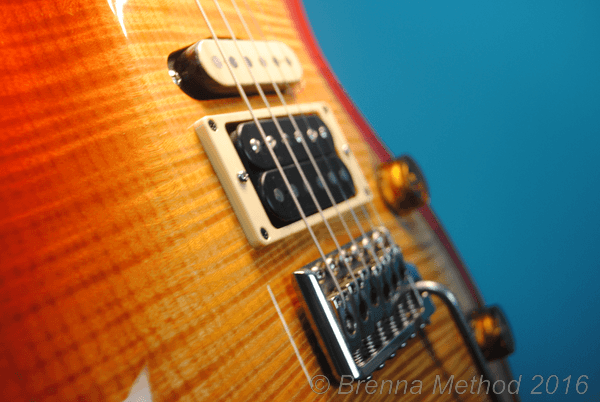Flow
Flow is defined as “the mental state of operation in which a person performing an activity is fully immersed in a feeling of energized focus, full involvement, and enjoyment in the process of the activity.” (Thanks Wikipedia.) When you’re in flow, your body and mind are perfectly synchronized. Flow is the holy grail of music, what we all hope to experience by becoming musicians.
Practice
Guitar practice takes a lot of time and patience. It’s important to practice whatever we are learning as accurately as possible, so going slowly and focusing on precision is critical to developing the motor memory and procedural memory that will ultimately allow us to relax and enter a state of flow in which the music we’ve practiced emerges effortlessly. But flow only happens when we let go. So how do we shift from focusing on precision to letting go?
It’s an irony of practice that the slow, repetitive, and careful practice that are necessary to learning to play a piece well, or master a new technique, can also seem to solidify our limits. Every practicing guitarist has had the experience of coming back to playing after an extended break, such as a vacation, to find herself playing what she was working on before the break better and more effortlessly than when she was practicing every day.
Let Go and Leap
That’s because moving forward requires a leap. We might think of this as a leap of faith, but in music it’s a leap of trust. When we’ve practiced something well at a slow pace, perhaps 6 times in a row accurately, and then speed up the metronome to try it faster, a psychological shift must take place. We don’t know that we can play the part faster, but we can reasonably expect to do so based on trust in our practice. This trust gives us the confidence to allow the part to unfold at a faster speed. At this moment the skillful approach is to just visualize it, or hear it, and let it happen. Forget about the technique. Usually we’ll be successful when we do so. But if instead we approach the part without trust, as if approaching a battle, we’ll tighten up and try too hard and undermine our ability. We’ll often blow it, and think we’ve hit a limit and must go back.
The guitarist returning from vacation often experiences unexpected success because expectations are low, and so there is no pressure, no trying too hard. In a relaxed state, the guitarist realizes the full benefit of her earlier careful practice as she enters a state of flow.
Balance
One way to duplicate this effect is to make sure our daily practice is balanced between careful, precise, repetitive practice, and flow. In addition to working on new skills and new pieces, we should spend some time every day playing music that is easy and enjoyable, that we’ve already mastered so that we play it effortlessly, and expressively, feeling the music moving through our whole body and mind. When we enter this state of flow each day, we stay familiar with that feeling, and we can access it and make the psychological shift into this state at the appropriate time in the process of mastering new skills.
Here are some steps you can take to practice moving back and forth between focus on precision, and focus on flow:
1. Break it Down
Break a piece you are learning into small sections, and go through each at a slow enough tempo to play perfectly, repeating 3 to 6 times.
2. Step Up Slowly
Bump the metronome up slightly to play these faster. Remembering the feeling of flow, trust your practice, let go, and watch the music happening.
3. Put It Together
Put the parts together and play the piece much more slowly than the top speed at which you are capable, in order to relax totally through the whole piece. Play with a metronome to maintain the slow speed you begin with.
4. Visualize
Put down your guitar, close your eyes, and visualize yourself playing the piece with ease and enjoyment. If you find yourself tightening, or even making “mistakes” at times, go back through these parts two or three times until you “play” them perfectly with ease.
5. Let Go
Pick up your guitar again, shift into flow, and play the piece at a faster speed, with no concern for accuracy or avoiding mistakes. All of your effort is to remain relaxed and flowing through the piece. When you do make mistakes, note them, and finish your practice by repeating Step 1 on these sections. Then begin your next practice with these sections using Step 1.
© 2014 Brenna Method

